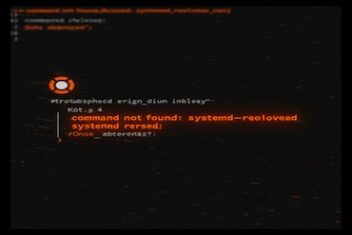60% of companies that suffer a mass data loss will go out of business within six months. With shocking statistics like that, it’s no wonder that businesses around the globe are searching for more comprehensive storage solutions. Whether it’s the 78% ofcases caused by hardware failure or simply from human error, data loss happens a lot more than you’d think.
Additionally, considering that more employees than ever are currently working from home, the possible sources of data that your business is creating have never been greater. With more data produced every single day, it’s paramount that your organization has an effective data backup strategy ready to go.
In this article, we’ll be explaining the different formats and types of data backup, as well as pointing towards the best practices that you can adopt in order to create a strategy for your business.
Let’s get right into it.
Read: How to backup and restore your Android device with ADB on Ubuntu
What types of backups are there?
Backup seems like a very simple term, often being understood as a record of data that are used if any current data is lost. While this is certainly the case, backups are actually slightly more complex than people typically think.
In fact, backups can be split into two main ideas: the level of the backup and the method. Let’s break these down further.
Backup levels
While backups are an all-encompassing term, there is actually slightly more to it. Every backup is categorized into one of three levels, each having a different scope and depth. The three backup levels are:
- Full Backup – A very straightforward level of backup, a full backup records absolutely all of the data your company currently has, making sure that you have a comprehensive record of all the data that you have ever produced. This backup is, of course, incredibly extensive and will take up a lot of space.
- Differential Backup – Differential, coming from ‘Different’, is a backup that focuses on copying all of the files that have changed since the last time your company ran a full backup. If your organization is armed with one full backup and a differential backup, you’ll effectively be able to restore your entire working system. However, this system is prone to having a lot of duplicates, especially when you have several distinct differential backups saved over time.
- Incremental Backup – This is the preferred backup system by companies that don’t have a lot of room for enormous storage files. The only files that are saved within an incremental backup are the ones that have been changed during the period between this current backup and the previous one was initiated. As this is a very specific backup, it takes up much less space. That said, if there is lots of time between your backups, this can be a very problematic storage system.
By moving between these three levels, your business will be able to establish a system of backing up your data that works for you.
Read: Best Windows 10 backup and recovery software
Backup methods
Although a backup is a backup, wherever or however you store it, there is actually a range of different methods that your business could use when it comes to securing your data. Typically, a business will either use one of these systems or combine data backups across a range of these methods in order to give a more comprehensive data safety net.
We’ll be discussing:
- Snapshot Backup
- On-site backup
- Cloud Backup
- Versioning Backup
Let’s get into it.
Snapshot Backup
Also known as an image backup, a snapshot is when an entire version of a data system is recorded at once. If a system is ever corrupted, an IT expert could use a snapshot backup to restore the system at the given time that it was snapped.
One core idea to note is that a snapshot is not about storing data but rather about demonstrating the structure of the data and the systems involved. Picture this form of backup as a skeleton, showing a user exactly how the system is structured and functions.
This is most useful for those developing applications, as this snapshot will effectively demonstrate how to put the system back together if it is ever corrupted or lost.
Read: How to recover deleted files on linux – an Exhaustive list of tools
On-site backup
An on-site backup is probably the most familiar format of backing up data, especially for those that have been doing it for a long time. While this used to mean just backing up all your data to an on-site storage facility, this format of data capturing has evolved over the ages.
Now, on-site backups are complicated systems with different backup layers, preventative measures to stop duplication, and effective visualization systems. The only downside to this method of data storage is that they’re typically very costly, as businesses have to pay for physical space in which storage centers can be placed.
Cloud Backup
Cloud storage has become a globally in-demand industry, with largescale tech companies like Amazon and Google releasing cloud backup solutions. In fact, almost one in every two organizations currently use some form of cloud backup as their primary form of storage.
Cloud storage does exactly the same thing as local storage, except you don’t need to pay for physical storage facilities. As everything is done online, this form of storage is also much easier to manage, with continual updates to both the structure of your data and its security, ensuring a comprehensive level of backup.
A whole industry has formed around cloud storage, with different data warehouses providing different methods and structures of backing up your data. If you’re looking for a cloud solution, then take a look at this comparison of two heavyweights in the industry, Databricks vs Snowflake.
Read: Top 10 Reasons Why Your Business Needs to Embrace the Cloud
Versioning Backup
While backups are normally an all-encompassing endeavor, as seen by large scale on-site or cloud storage solutions, versioning backups takes a different approach. Instead of taking a recording of your whole system, a versioning backup will record individual files.
This format of storage allows users to restore a singular file at any point in time, ensuring a more precise format of data backup. If you’re working with delicate files or something of vital importance, then it’s a very good idea to create version backups of your most critical documents.
What does an effective backup strategy include?
When it comes to creating a data backup for your business, there isn’t a one-size-fits-all solution. However, there are some core practices that you can incorporate into your organization to ensure that you have an extensive and comprehensive backup if you ever were to suffer a data failure.
During the process of creating data backups, you should always:
- Vary Your Backup Layers
- Test Your Backups
- Scale Backups Based on Importance
- 3-2-1 Strategy
Let’s break these down further.
Read: How Do Cloud Computing Services Benefit Businesses
Vary Your Backups Layers
As detailed above, a backup is much more than just a one-click solution. There are several different backup layers and methods that you can use. We recommend that you take a hybrid approach, employing different strategies and compiling different data layers over time.
While data can end up taking a lot of room, it’s always worth investing in this area, as data is vital to running your business. Especially when it comes to sustaining systems that you use every single day, having copies is vital.
Test Your Backups
While most people take a set-it and forget-it approach to their data backups, we would urge you to actually double-check that your backups are actually occurring as they should. There’s nothing worse than suffering data corruption, going to restore a backup, and realizing that your systems have been faulty for months.
You should regularly double-check that your backups are downloading correctly, going into the files and checking on an individual level to ensure their total health. If you find a backup that is corrupted or missing elements, you’ll be able to take action and ensure the next backup is completely healthy.
Scale Based on Importance
While taking a full backup is an important activity that your business should regularly engage in, you should also endeavor to scale your systems depending on the importance of certain projects. By using versioning backups, you’ll be able to create file copies of your most important documents.
Doing this at regular intervals on your most important files will ensure that you always have a healthy backup. No matter if you suffer a hardware failure or one of your team accidentally deletes an essential file, this scaled strategy will make sure that your business never loses its most important resources.
Read: Is There Any Free Software For Data Recovery
3-2-1 Strategy
Especially if you’re prone to using on-site storage, you should endeavor to make sure that you have backups of your backups. Known as the 3-2-1 strategy, this is where you have three copies of all of your data across two different storage types. Alongside that, you should have one data copy stored in a remote location that acts as a complete failsafe.
Be sure to vary your data storage across on-site, cloud, and other solutions that come your way. This comprehensive approach makes sure that come what may, you’ll always have a backup that you can turn to, even in the most unexpected of circumstances.
Final Thoughts
Engaging in these four strategies ensures that no matter what happens, you’ll always be able to find a backup to save your skin.
Creating a data backup is one of the most important functions that happens behind the scenes at any organization. Considering how grave data loss can be, setting businesses back weeks (and even months when they have poor strategies in place), there’s never been a better time to double-check the systems that you’re currently using.
And before you forget – go and backup your data!
If you like the content, we would appreciate your support by buying us a coffee. Thank you so much for your visit and support.



